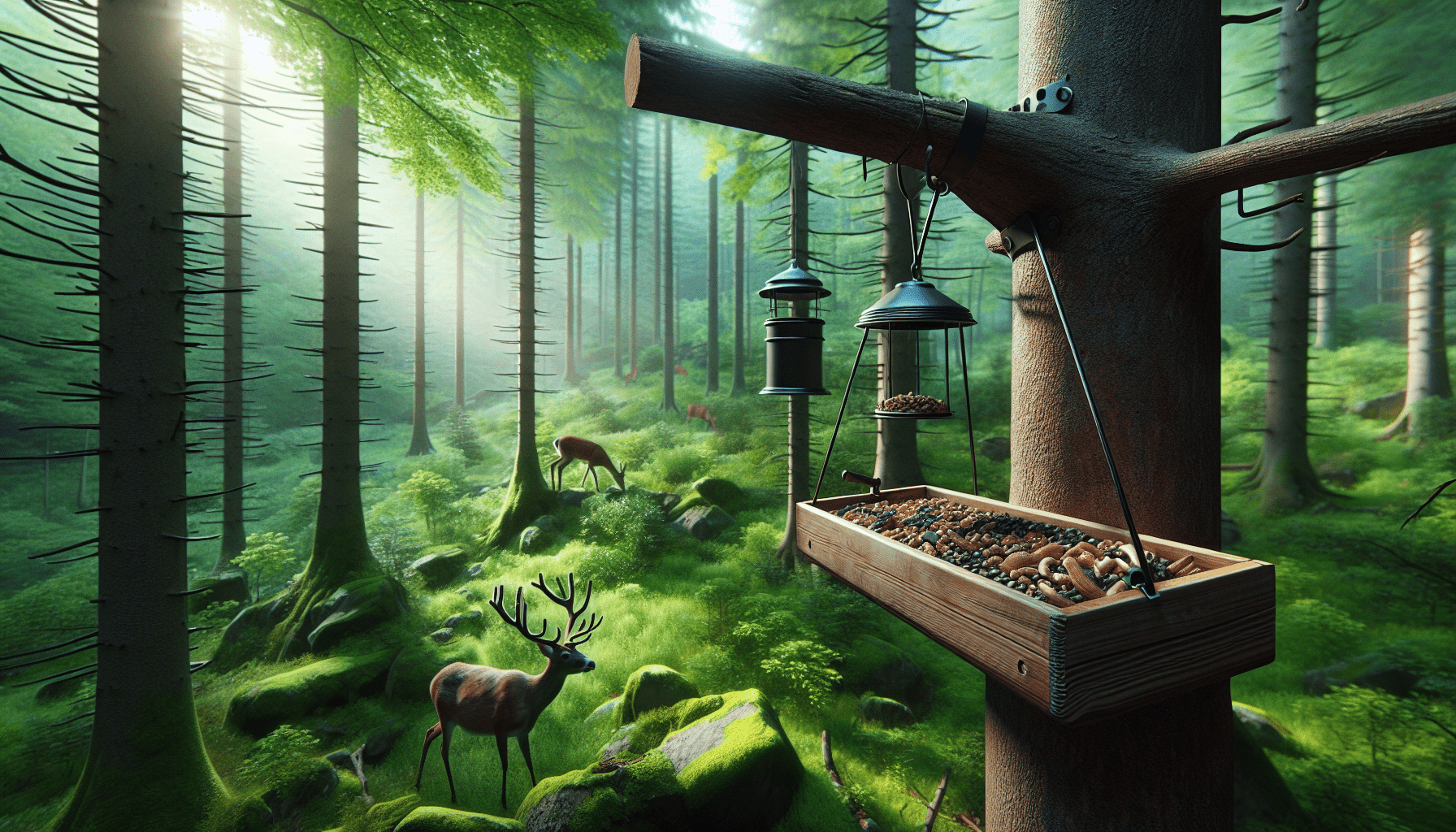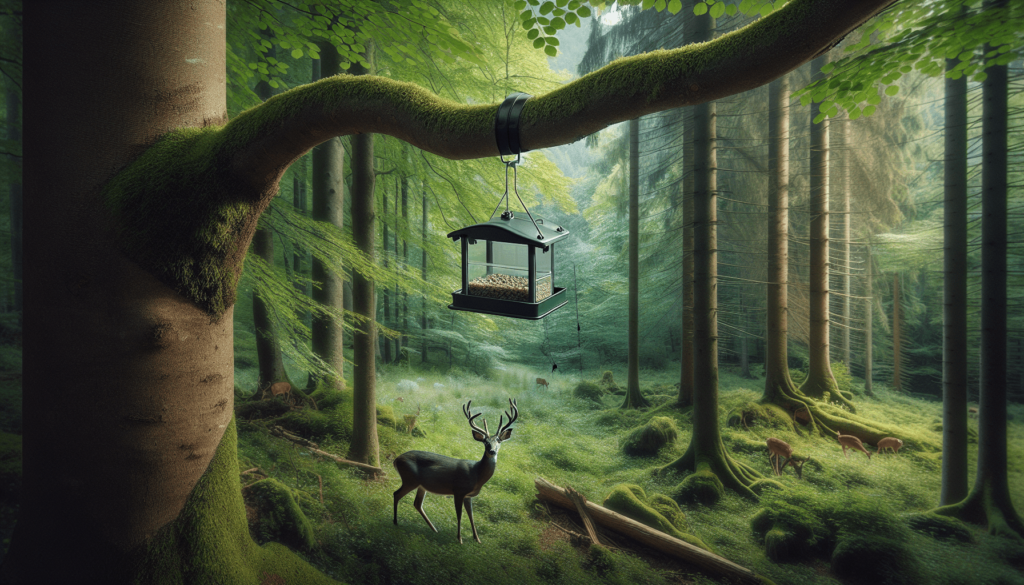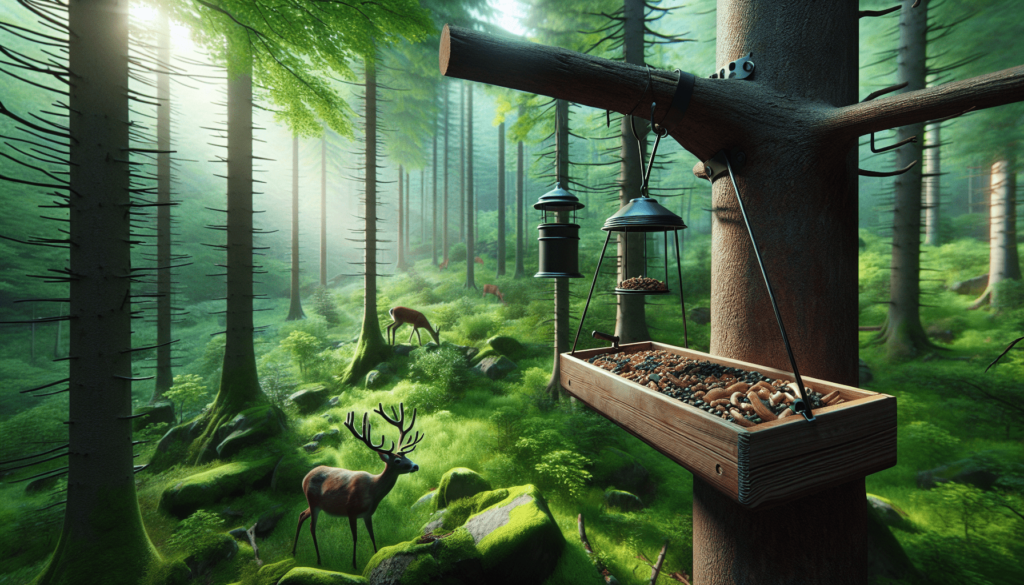
Have you ever wondered if you’re getting the most out of your Hanging Deer Feeders? Using these feeders can truly make a difference in attracting and sustaining deer in your area. However, it’s easy to make simple mistakes that can greatly reduce their effectiveness. To help you maximize your results, let’s examine some common missteps and how you can avoid them.

Location, Location, Location
Placing Feeders Too Close to Human Activity
One of the most common mistakes is placing your feeder too close to areas frequented by humans. Deer are naturally skittish animals, and too much human interaction can spook them, making them wary of your feeder.
Ideal Placement Spots
You should aim to place your feeder in a quiet area with minimal human traffic. A location near a water source, in a secluded part of the forest or a field corner are excellent spots. Make sure it’s far enough from paths or roads to ensure the deer feel secure.
Understanding Deer Feeding Habits
Timing Your Feed
Another key mistake is not timing your feeder correctly. Deer are crepuscular, which means they are mostly active during dawn and dusk. If your feeder releases food at the wrong times, you might miss a crucial window for attracting deer.
Optimized Feeding Schedule
Setting your feeder to dispense food during early morning and late afternoon is generally most effective. Brands such as Moultrie and On Time Wildlife Feeders offer programmable timers that allow you to set specific times for feeding, ensuring optimal attraction.
Overlooking Feeder Maintenance
Neglecting Regular Cleaning
Feeders that aren’t cleaned regularly can become ineffective very quickly. Deer can smell moldy or spoiled food from a distance and it will deter them from coming near your setup.
Proper Maintenance Routine
Make it a habit to clean your feeder at least once a month. Remove old food and clean all the parts with a mild soap solution. This ensures that the food remains fresh and enticing for the deer. Brands like Highwild and Gravity Fed offer feeders that are easy to disassemble for cleaning.
Using Inappropriate Feed Types
Wrong Diet Choices
Feeding deer inappropriate food is another significant mistake. Certain feeds, while appealing to other animals, might not be suitable for deer and could even harm them.
Choosing the Right Feed
For the optimal diet, use specially formulated deer feed available from brands like WILDGAME INNOVATIONS and Keilyn. These often include essential nutrients, such as corn, oats, and grains, which are beneficial for deer.

Underestimating the Importance of Elevation
Setting Feeder Too Low
If your feeder is set too low, it might attract undesirable animals like raccoons, which can quickly deplete your feed.
Proper Height Adjustments
Ensure that your feeder is elevated adequately. Hanging it around 5-7 feet off the ground is usually a good height. This avoids access by smaller animals while ensuring deer can easily reach the food. SolutionsPatIQ and American Hunter offer models that come with adjustable height options, making this task easier.
Inconsistent Refilling Schedules
Erratic Refilling Habits
Consistency is key when it comes to deer feeders. If you refill your feeder irregularly, it can disrupt the feeding patterns of the deer, making them less likely to return.
Establishing a Routine
Create a refilling schedule and stick to it. Consistency helps deer become accustomed to finding food at your feeder, making it a reliable source for them. Using a large-capacity feeder, like those from Boss Buck or Andee, can help minimize the frequency of refills and ensure a constant food supply.
Not Considering Seasonal Changes
Ignoring Seasonal Needs
Deer feeding needs change with the seasons. For example, during the fall, deer require more proteins and fats to build energy reserves for the winter.
Adapting to the Seasons
In the summer, switch to feeds that are higher in carbohydrates and minerals. During the fall and winter, incorporate high-protein and fat feeds to support their energy needs. Brands like KUMFJ offer seasonal feed options that you can rotate based on the time of year.
Protection from Elements and Pests
Lack of Weather Protection
Leaving feeders exposed to the elements can spoil the food quickly, reducing its attractiveness to deer and even making it unsafe.
Using Protective Measures
Invest in weatherproof feeders or those with covers to protect the food from rain and sun. Brands like American Hunter and Moultrie offer feeders with built-in weather protection features that can keep your feed fresh longer. Additionally, consider using feeders that are resistant to pests like squirrels and raccoons by incorporating secure lids and stands.
Monitoring and Adjusting Strategies
Failure to Monitor
A set-it-and-forget-it approach rarely works with hanging deer feeders. Not monitoring the feeder can lead to issues like running out of feed or the dispenser malfunctioning without your knowledge.
Regular Monitoring
Make it a point to check your feeder regularly. This helps you stay on top of any issues and ensure that the feeder is functioning correctly. Some advanced models from brands like On Time Wildlife Feeders and WILDGAME INNOVATIONS provide indicators and alerts to help you monitor remotely.
Conclusion
Using hanging deer feeders can be incredibly rewarding when done correctly. By being mindful of common mistakes such as incorrect placement, inappropriate feed types, neglecting maintenance, and inconsistent refilling, you can greatly improve your chances of attracting and nurturing a healthy deer population. Brands like Moultrie, American Hunter, and Highwild offer various solutions to help you optimize your feeder setup. Proper care and timely adjustments can yield amazing results, ensuring that your feeder remains a reliable and effective tool in attracting deer.



